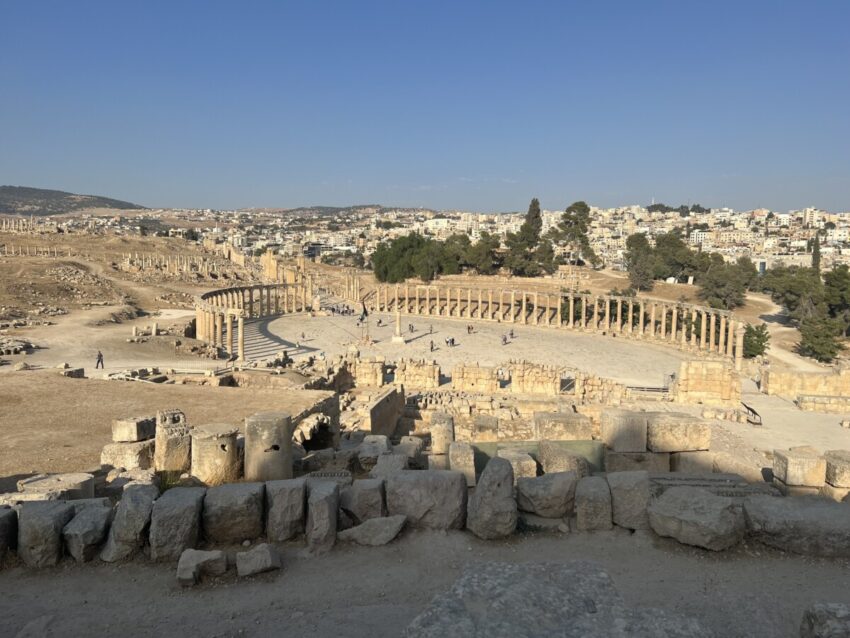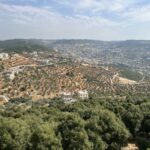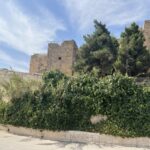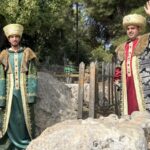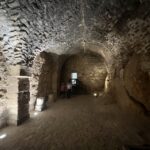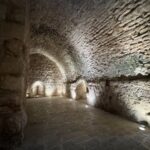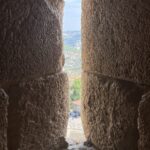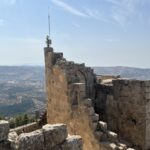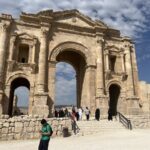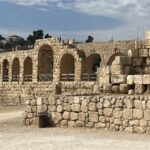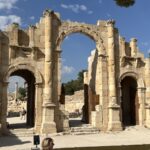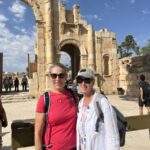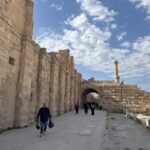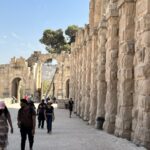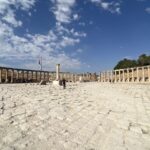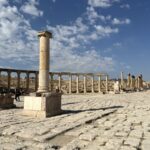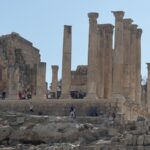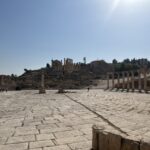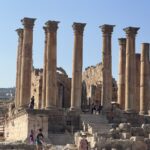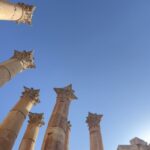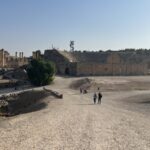Our first day in Jordan!
The landscape is very much how I imagined it to be; dry, arid, hilly and sandy. We headed out from Amman with our fellow travellers to Ajloun which is a town in the fertile highlands of north Jordan. It’s overlooked by the ruined Ajloun Castle, originally built in 1184 to defend against the Crusaders, which also explains its strategic location. The castle controlled traffic along the road connecting Damascus and Egypt. According to Saladin’s historian Baha ad-Din ibn Shaddad, the fortress was primarily built in order to help the authorities in Damascus control the Bedouin tribes of the Jabal ‘Auf.
The fortress is an Islamic fortress, not built on ancient foundations, but was built in the Ayyubid era according to what Arab historians and archaeological evidence confirm, but its construction was influenced by the styles of castles in the Middle Ages. Each of the three levels of the tower had a different function.
The lower level was used as sleeping quarters for soldiers. It is believed that the second level housed the castle mosque, as a specially carved stone located in one of the windows on that level is suspected to have been a mihrab. The third level of the tower was used as a palace.
After lunch in a restaurant that offered a mezze including hummus, moutabal, and tabbouleh, followed by a mixed grill of various kebabs, we headed to Jerash.
The ancient city of Jerash boasts an unbroken chain of human occupation dating back more than 6,500 years and is only about 45km north of Amman and because of its water the site has been settled at least since Neolithic times. The city’s golden age came under Roman rule and the site is now generally acknowledged to be one of the best-preserved Roman provincial towns in the world outside of Italy, and one of the Decapolis cities once named Gerasa. Hidden for centuries in sand before being excavated and restored over the past 70 years, Jerash reveals a fine example of the grand, formal provincial Roman urbanism that is found throughout the Middle East, comprising paved and colonnaded streets, soaring hilltop temples, grand theatres, spacious public squares and plazas, baths, fountains and city walls pierced by towers and gates. The ruins include the 2nd-century Hadrian’s Arch, the Corinthian columns of the Temple of Artemis and the huge Forum’s oval colonnade. Beneath its external Graeco-Roman veneer, Jerash also preserves a subtle blend of east and west. Its architecture, religion and languages reflect a process by which two powerful cultures meshed and coexisted – The Graeco-Roman world of the Mediterranean basin and the ancient traditions of the Arab Orient.
In the Holy Bible, it was mentioned that Jesus Christ passed through Jerash, or (Gerasa), where Christ performed a miraculous exorcism on a man possessed by demons.
The first major destruction of Jerash occurred in 749 CE when an earthquake struck the city. The quake caused extensive damage to buildings, including the Temple of Artemis, which was destroyed. This event marked the beginning of a long period of decline for Jerash.
Jerash is often referred to as the ”Pompeii” of the Middle East.
Some of the buildings of Jerash
North Theatre – The North Theatre was built in 165 AD. In front is a colonnaded plaza where a staircase led up to the entrance. The theatre originally only had 14 rows of seats and was used for performances, city council meetings, etc. In 235 AD, the theatre was doubled in size to its current capacity of 1,600. The theatre fell into disuse in the 5th century and many of its stones were taken for use in other buildings.
Nymphaeum – This ornamental fountain was constructed in 191 AD and dedicated to the Nymphs. Such fountains were common in Roman cities, and provided a refreshing focal point for the city. This well-preserved example was originally embellished with marble facings on the lower level and painted plaster on the upper level, topped with a half-dome roof. Water cascaded through seven carved lion’s heads into small basins on the sidewalk and overflowed from there through drains and into the underground sewage system.
Oval Plaza – The spacious plaza measures 90m x 80m and is surrounded by a broad sidewalk and colonnade of 1st century AD Ionic columns. There are two alters in the middle, and a fountain was added in the 7th century AD. This square structure now supports a central column, which was recently erected to carry the Jerash Festival Flame.
Northern Theatre of Jerash (known as Hadrian’s Arch) – Built to commemorate the visit of the Emperor Hadrian to Jerash in 129 AD, this splendid triumphal arch was intended to become the main Southern gate to the city; however, the expansion plans were never completed.
Such a privilege to walk through this magnificent city where ancient civilisations have lived in the past.
A tiring and hot day but well worth the experience.

